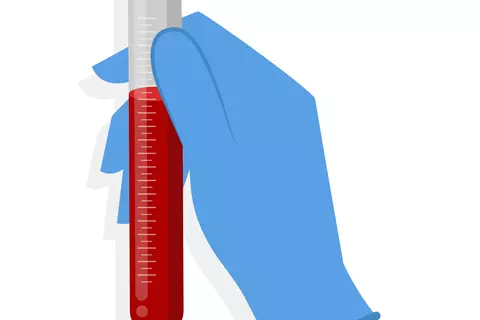Repeated measurements of quantitative HBsAg can be helpful in predicting the probability of HBsAg loss
Fan R et al, Gut. 2024;73(10):1725–36
In this study with 6792 individuals infected chronically with hepatitis B virus from China who were treated with nucleos(t)ide analogues, a score based on twice-yearly measurements of quantitative HBsAg was developed that was able to predict HBsAg loss. Overall, however, the rate of HBsAg loss after 5 years was only 2.4%.
Objective: Hepatitis B surface antigen (HBsAg) loss is the optimal outcome for patients with chronic hepatitis B (CHB) but this rarely occurs with currently approved therapies. We aimed to develop and validate a prognostic model for HBsAg loss on treatment using longitudinal data from a large, prospectively followed, nationwide cohort.

Design: CHB patients receiving nucleos(t)ide analogues as antiviral treatment were enrolled from 50 centres in China. Quantitative HBsAg (qHBsAg) testing was prospectively performed biannually per protocol. Longitudinal discriminant analysis algorithm was used to estimate the incidence of HBsAg loss, by integrating clinical data of each patient collected during follow-up.
Results: In total, 6792 CHB patients who had initiated antiviral treatment 41.3 (interquartile range [IQR], 7.6–107.6) months before enrolment and had median qHBsAg 2.9 (IQR, 2.3–3.3) log10 IU/mL at entry were analysed. With a median follow-up of 65.6 (IQR, 51.5–84.7) months, the 5-year cumulative incidence of HBsAg loss was 2.4%. A prediction model integrating all qHBsAg values of each patient during follow-up, designated GOLDEN model, was developed and validated. The AUCs of GOLDEN model were 0.981 (95% confidence interval [CI]: 0.974–0.987) and 0.979 (95% CI: 0.974–0.983) in the training and external validation sets, respectively, and were significantly better than those of a single qHBsAg measurement. GOLDEN model identified 8.5–10.4% of patients with a high probability of HBsAg loss (5-year cumulative incidence: 17.0–29.1%) and was able to exclude 89.6–91.5% of patients whose incidence of HBsAg loss is 0. Moreover, the GOLDEN model consistently showed excellent performance among various subgroups.
Conclusions: The novel GOLDEN model, based on longitudinal qHBsAg data, accurately predicts HBsAg clearance, provides reliable estimates of functional hepatitis B virus (HBV) cure and may have the potential to stratify different subsets of patients for novel anti-HBV therapies.